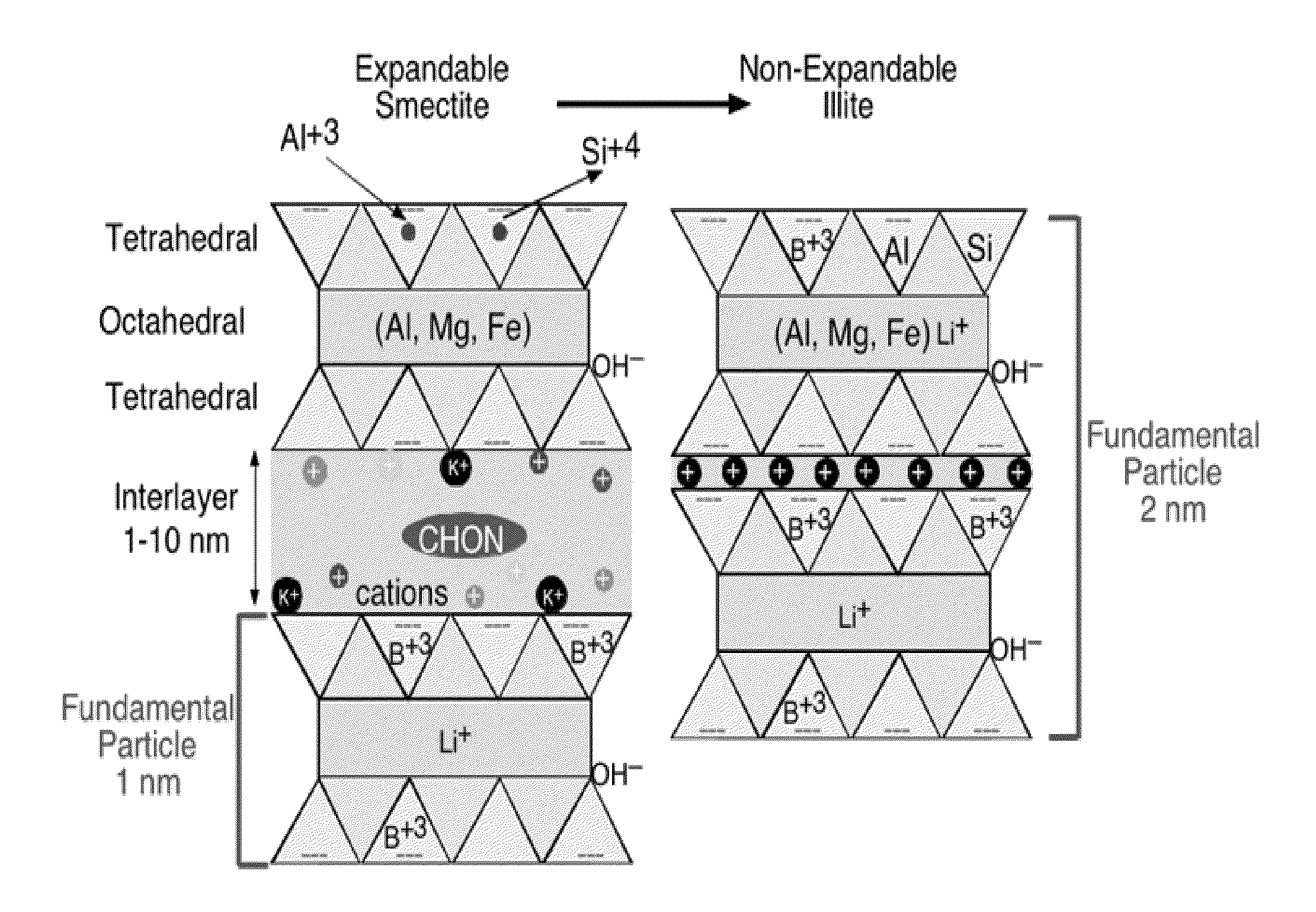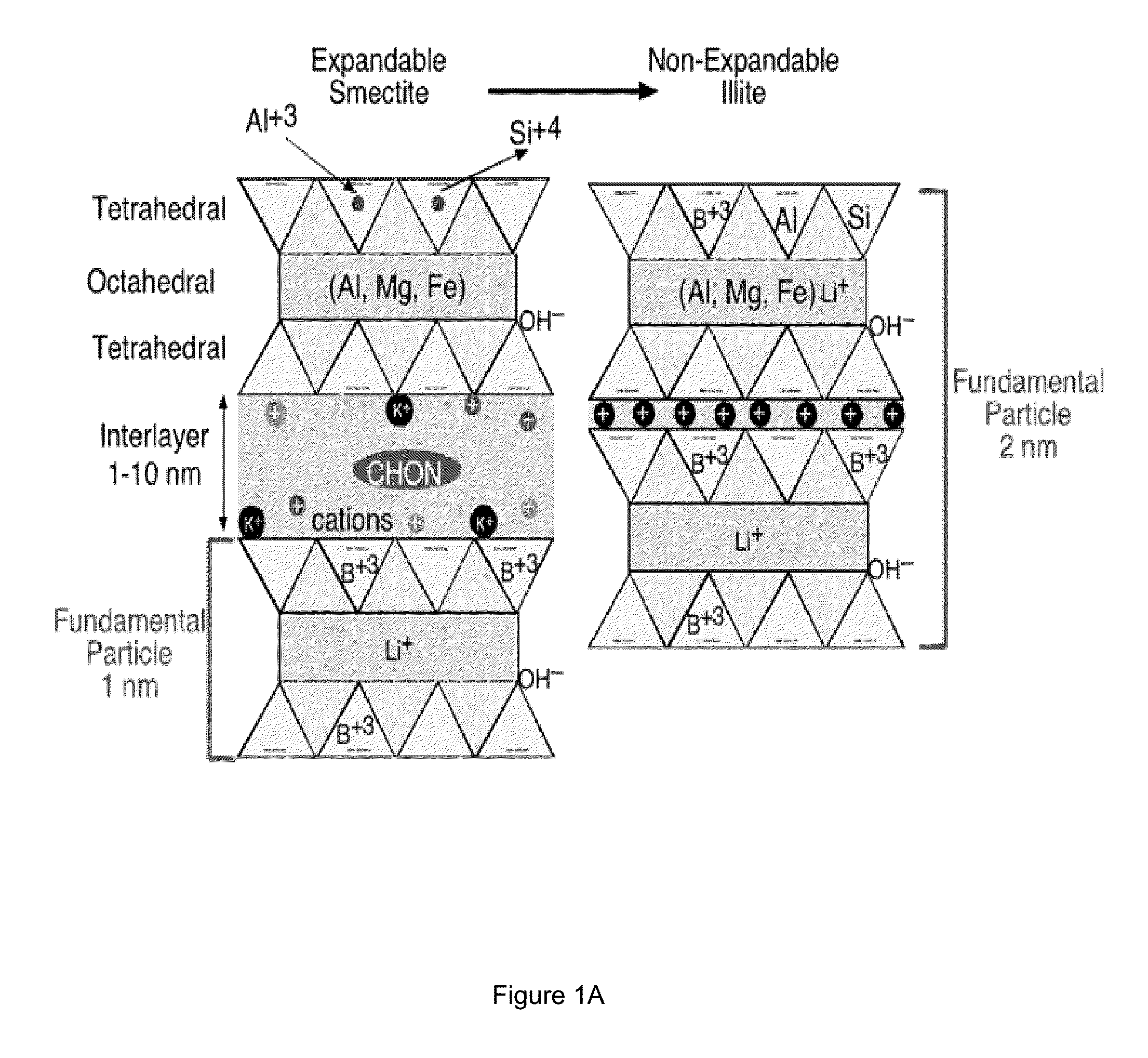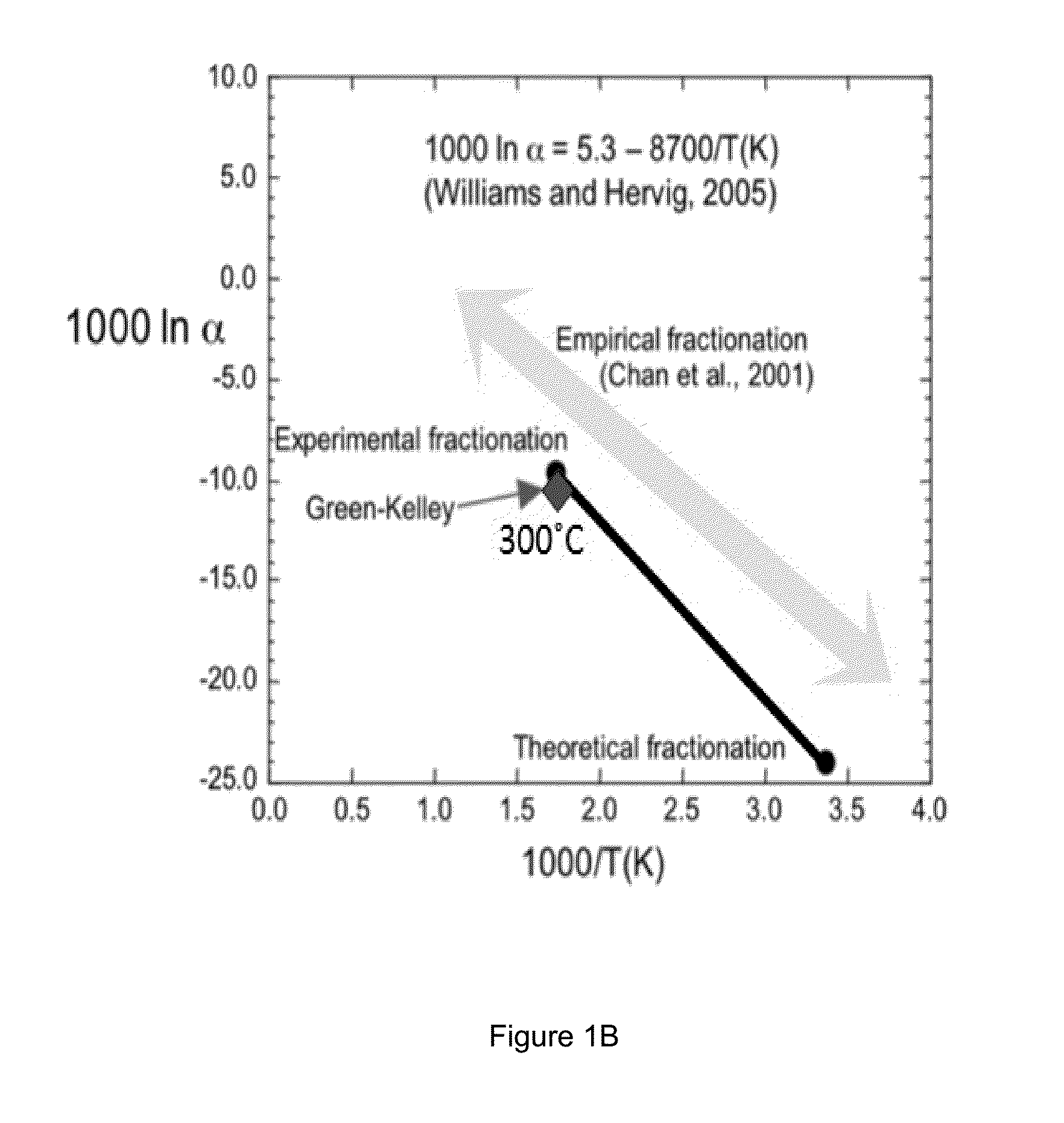Boron And Lithium Isotopic Method For Tracing Hydrocarbons And Their By-Products
a hydrocarbon and isotopic method technology, applied in the field of geochemistry, can solve the problems of complex organic chemical analysis and specialized analysis, and achieve the effect of improving oil recovery
- Summary
- Abstract
- Description
- Claims
- Application Information
AI Technical Summary
Benefits of technology
Problems solved by technology
Method used
Image
Examples
Embodiment Construction
[0052]The present invention provides a method of identifying the nature and source of hydrocarbons in pores of kerogen from shale reservoirs. Specifically, the inventors have modeled the lithium and / or boron isotopic fractionation between the kerogen and bitumen phases of a potential source rock as a function of the temperatures derived from the kerogen thermal maturity. If the isotopic composition of the pore hydrocarbons (i.e., the bitumen phase) of the potential source rock is not as predicted based on the isotope fractionation model, then the bitumen is not from the potential source rock, and has migrated in from another source. Modeling different temperatures and / or source kerogen compositions may then reveal the source of migrated bitumen.
[0053]The kerogen composition of the potential source rock can be directly measured; however, isotope fractionation models using other source rock phases may also be used to determine the expected lithium and / or boron isotopic compositions of...
PUM
| Property | Measurement | Unit |
|---|---|---|
| density | aaaaa | aaaaa |
| pH | aaaaa | aaaaa |
| depth profile | aaaaa | aaaaa |
Abstract
Description
Claims
Application Information
 Login to View More
Login to View More - R&D
- Intellectual Property
- Life Sciences
- Materials
- Tech Scout
- Unparalleled Data Quality
- Higher Quality Content
- 60% Fewer Hallucinations
Browse by: Latest US Patents, China's latest patents, Technical Efficacy Thesaurus, Application Domain, Technology Topic, Popular Technical Reports.
© 2025 PatSnap. All rights reserved.Legal|Privacy policy|Modern Slavery Act Transparency Statement|Sitemap|About US| Contact US: help@patsnap.com



